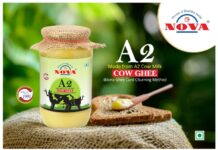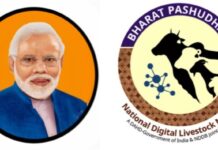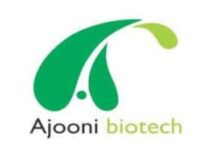New Delhi, November 08, 2023 : Alt-dairy innovation is reaching new heights in North America, Western Europe and Australasia, where more than half of all “dairy” launches were non-dairy alternatives in 2022, according to Innova Market Insights. In these regions, a milk renaissance is underway, with plant-based sources usurping dairy milk at the breakfast table and precision fermentation promising a new era for sustainable cheese and ice cream.
But the buzz of alternative dairy is far from a worldwide phenomenon, with most activity staying local to developed economies with higher purchasing power. And while dairy consumption in the US is leveling off, the nutrition source is gaining ground in lower-income areas as a versatile, affordable and shelf-stable food that can help budgets stretch in a tough economic climate.
Dairy ingredients were also recently highlighted by suppliers as key sources for addressing malnutrition by providing protein and serving as a base for fortifiers.
The World of Food Ingredients sits down with Krysta Harden, president and CEO of the US Dairy Export Council (USDEC) — a non-profit membership organization that represents the global trade interests of US dairy — to discuss the rise of dairy alternatives and the role “real dairy” plays in nourishing massive populations worldwide.
How are plant-based dairy alternatives impacting consumer habits?
Harden: Consumers now can make more choices, especially in developed countries. And over time, there will be more and more products. But right now, many alternatives are trendy for a while, and then one replaces the other. So we’ll have to see long-term really what has long legs and what is going to be part of a more stable diet.
Krysta Harden, president and CEO of the US Dairy Export Council.We need to recognize that there are a lot of consumers who won’t have access to those choices because of price. They won’t have the variety that consumers in Europe or North America might enjoy.
Many families around the world are trying to make ends meet. For example, in the Philippines, 40% of their income goes to food, so they’re going to be very choosy on price and how to get the most value out of a product that the whole family will eat.
We must recognize what’s happening in a global population at all levels. In many parts of the world, if you have a cow, you can feed your family and maybe your neighbors. It’s about more than just those with the income and the resources to be choosy. We have to look at everybody and make sure they’re getting a good healthy diet.
How do you see precision fermented or cell-based dairy making an impact?
Harden: Products made with precision fermentation are still relatively niche and geared toward a higher income. I’m not saying that will last forever, but that’s how it is today. It’s exciting, of course, and science is wonderful.
But for a village in Indonesia or Nigeria, where large populations are still in rural areas, it may not be as available today as you might find in Paris, London or Washington, DC. You can’t find ice cream made with precision fermentation in my hometown of Camilla, Georgia.
In the longer term, we will have to see if cell-based and precision-fermented proteins will be affordable and available. What’s going to need refrigeration and what’s not?
Even just from a transport perspective, refrigerated trucks aren’t available in all parts of the world, especially when it comes to supplying small mom and pop cantinas or bodegas, which provide food for the largest populations.
Where is USDEC increasing its market share?
Harden: There is more focus on exports because we are so productive and our population in the US is not growing. We’re very slightly growing and our products are already in the mid-90s percentage of households in the US, so we’ve got to look around the world for newer markets, for growing those markets and gaining a greater market share.
We have offices in 10 locations. We have folks on the ground in those markets listening to consumers and governments because trends can also be government-led in certain places around the world.
Dairy ingredients can help fortify foods to stretch the nutritional value of meals when budgets are tight.We work closely in many communities to make sure that we can share data and information and our science with local dairy farmers to make sure we’re working together. For example, bridging dairies and schools and making sure dairy is in the marketplace and available for everyone.
That’s part of what our commitment is, making sure there’s a demand for dairy because it’s a healthy, nutritious product and it should be available for all those who want it and need it.
In addition to our investments in Latin America, Asia and the emerging dairy markets of Northern Africa and the Middle East, we are looking long-term at parts of Africa where they have large populations but not robust dairy production.
They are hungry people who need nourishing in just about every corner of the world, and there’s really no limit to what US dairy can do over time. We are third in exports today. My guess is that it will continue to grow, and we will take a larger market share over the years.
A recent interview with ProVeg Nigeria pointed out that large populations in Africa have lactose intolerance and dairy might not be the most suitable solution — how should industry address situations like that?
Harden: We have to be extremely aware of cultural preferences and health preferences, and we need products that can help everyone have dairy in their diet. I believe in that holistically, and we just have to be more flexible and have a variety of products.
If they want to choose dairy and the only reason they’re not is because there is a health concern, then we need to have more products. That’s our responsibility and we need to make those investments. according to the reports published in dairynews7x7.com .
In the US, we have Lactaid, which is a huge growing brand that now has ice cream and other products as well. There is also Fairlife, which is a lactose-free ultra-filtered milk that is extremely popular with the younger generation.



















![Poolani Milk Cooperative Society [PMCS] well-established and fastest-growing in the Dairy Sectorof RuralKerala](http://thedairytimes.com/wp-content/uploads/2024/04/1-218x150.jpg)









![Poolani Milk Cooperative Society [PMCS] well-established and fastest-growing in the Dairy Sectorof RuralKerala](http://thedairytimes.com/wp-content/uploads/2024/04/1-100x70.jpg)

